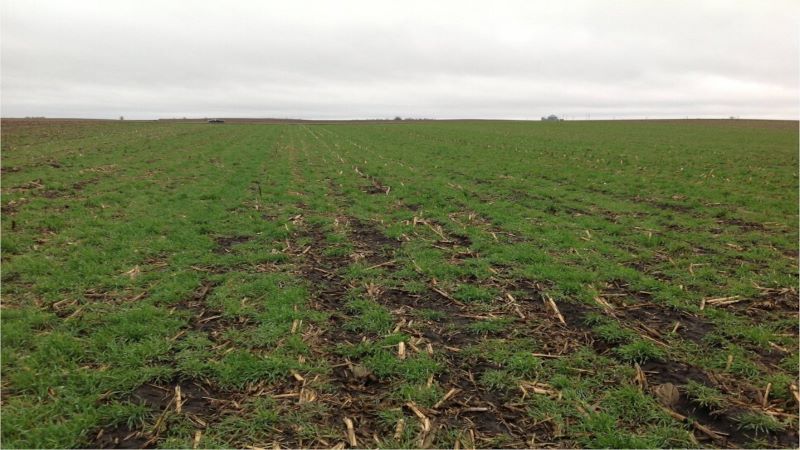December 5, 2022

Adding winter cover crops to corn and soybean cropping systems has increased steadily over the past decade. Farmers who adopt this practice are doing so because of the cover crops’ ability to improve soil quality and crop production efficiency. That said, cover crops require management and growers should have an idea of the benefits they want to see in order to evaluate ROI.
“A major benefit of cover crop usage is the carbon sequestration,” said Pioneer Field Agronomist Jonathan Rotz. “Because of that, a big win is the increase in organic matter in our soil.”
Cover crop benefits vary among species. Most winter cover crops compatible with corn and soybean cropping systems fall into one of three broad groups:
Grasses are versatile cover crops that establish quickly in the fall and are generally well suited for scavenging nitrogen, preventing erosion, building soil organic matter, suppressing weeds and providing additional spring forage.
Legumes can add nitrogen to the soil but establish more slowly than grasses and are less effective at protecting and building soil.
Brassicas provide many of the same benefits as grasses but break down more rapidly in the spring. Some brassicas also produce a large taproot that helps to remediate soil compaction.
When deciding which type of cover crop to plant, growers should decide which benefits are most important and determine their goals for adding cover crops to their cropping system.
Cover crops, like any other crop, need to be planted in a timely manner to establish growth and overwinter or provide enough biomass to stabilize the soil before a killing frost.
“For those wanting to get into cover crops, I always recommend starting with small changes,” Rotz said. “If you’re new, think about planting early or terminating early, and only operating on small cover crop acres.”
Read more about:
Crop ConditionsAbout the Author(s)
You May Also Like






